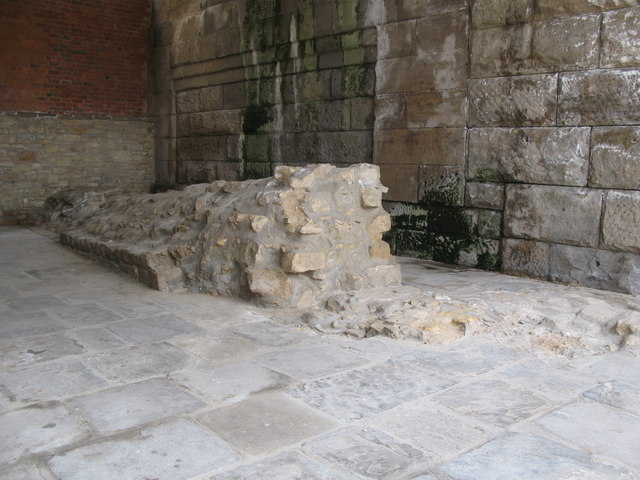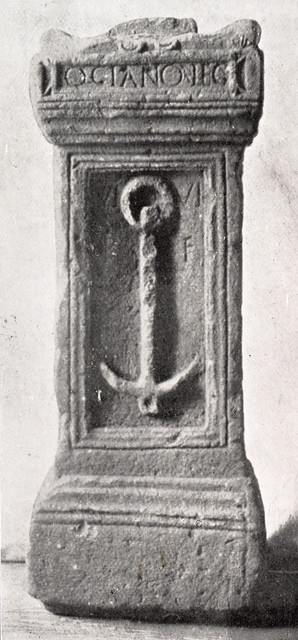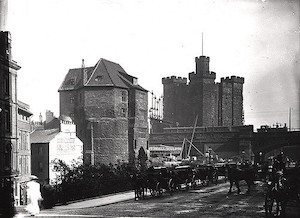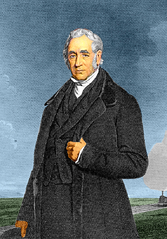Topics > People in History > George Stephenson (1781 - 1848) > Extracts from Biography of George and Robert Stephenson > Quick History of Newcastle and the North East
Quick History of Newcastle and the North East
Extract from: The Life of George Stephenson and of his son Robert Stephenson, by Samuel Smiles, 1881.
In no quarter of England have greater changes been wrought by the successive advances made in the practical science of engineering than in the extensive colliery districts of the North, of which Newcastle-upon-Tyne is the centre and the capital.
In ancient times the Romans planted a colony at Newcastle, throwing a bridge across the Tyne near the site of the low-level bridge shown in the prefixed engraving, and erecting a strong fortification above it on the high ground now occupied by the Central Railway Station. North and northwest lay a wild country, abounding in moors, mountains, and morasses, but occupied to a certain extent by fierce and barbarous tribes. To defend the young colony against their ravages, a strong wall was built by the Romans, extending from Wallsend on the north bank of the Tyne, a few miles below Newcastle, across the country to Burgh-upon-Sands on the Solway Frith. The remains of the wall are still to be traced in the less populous hill-districts of Northumberland. In the neighbourhood of Newcastle they have been gradually effaced by the works of succeeding generations, though the "Wallsend" coal consumed in our household fires still serves to remind us of the great Roman work.
After the withdrawal of the Romans, Northumbria became planted by immigrant Saxons from North Germany and Norsemen from Scandinavia, whose eorls or earls made Newcastle their principal seat. Then came the Normans, from whose New Castle, built some eight hundred years since, the town derives its present name. The keep of this venerable structure, black with age and smoke, still stands entire at the northern end of the noble high-level bridge—the utilitarian work of modern times thus confronting the warlike relic of the older civilization.
The nearness of Newcastle to the Scotch Border was a great hindrance to its security and progress in the middle ages of English history. Indeed, the district between it and Berwick continued to he ravaged by moss-troopers long after the union of the crowns. The gentry lived in their strong Peel castles; even the larger farm-houses were fortified; and blood-hounds were trained for the purpose of tracking the cattle-reavers to their retreats in the hills. The judges of Assize rode from Carlisle to Newcastle guarded by an escort armed to the teeth. A tribute called "danger and protection money" was annually paid by the sheriff of Newcastle for the purpose of providing daggers and other weapons for the escort; and, though the need of such protection has long since ceased, the tribute continues to be paid in broad gold pieces of the time of Charles the First.
Until about the middle of last century the roads across Northumberland were little better than horse-tracks, and not many years since the primitive agricultural cart with solid wooden wheels was almost as common in the western parts of the county as it is in Spain now. The track of the old Roman road long continued to be the most practicable route between Newcastle and Carlisle, the traffic between the two towns having been carried on pack-horses until within a comparatively recent period.
Contents < Smiley, 1881 > Growth od Coal Mining

Co-Curate Page
Pons Aelius
- Overview About Pons Aelius Remains The Romans built Pons Aelius, a bridge to cross the River Tyne, around 122AD. A fort was built there, eventually becoming known under the same …

Co-Curate Page
Roman Period (43 to 409 AD)
- The Romans invaded Great Britain in 43 AD, though there had been earlier Roman expeditions into Britain, led by Julius Caesar in 55 and 54 BC. The Romans occupied most …

Co-Curate Page
Hadrian's Wall
- Overview About Hadrian's Wall Hadrian's Wall stretches over 73 miles (117 km) coast to coast across Northern England. Construction began in AD 122 during the rule of emperor Hadrian. The …

Co-Curate Page
Anglo-Scottish Wars
- This is not an exhaustive list! Can you contribute to the Visual Timeline? 937 Battle of Brunanburh 1018 Battle of Carham 1093 Battle of Alnwick 1174 …

Co-Curate Page
Newcastle Castle
- In the 2nd Century AD, the Romans built a fort to protect the Pons Aelius bridge and supply route over the River Tyne. During the Anglo-Saxon age, the site was …


Co-Curate Page
Pons Aelius
- Overview About Pons Aelius Remains The Romans built Pons Aelius, a bridge to cross the River Tyne, around 122AD. A fort was built there, eventually becoming known under the same …

Co-Curate Page
Roman Period (43 to 409 AD)
- The Romans invaded Great Britain in 43 AD, though there had been earlier Roman expeditions into Britain, led by Julius Caesar in 55 and 54 BC. The Romans occupied most …

Co-Curate Page
Hadrian's Wall
- Overview About Hadrian's Wall Hadrian's Wall stretches over 73 miles (117 km) coast to coast across Northern England. Construction began in AD 122 during the rule of emperor Hadrian. The …

Co-Curate Page
Anglo-Scottish Wars
- This is not an exhaustive list! Can you contribute to the Visual Timeline? 937 Battle of Brunanburh 1018 Battle of Carham 1093 Battle of Alnwick 1174 …









